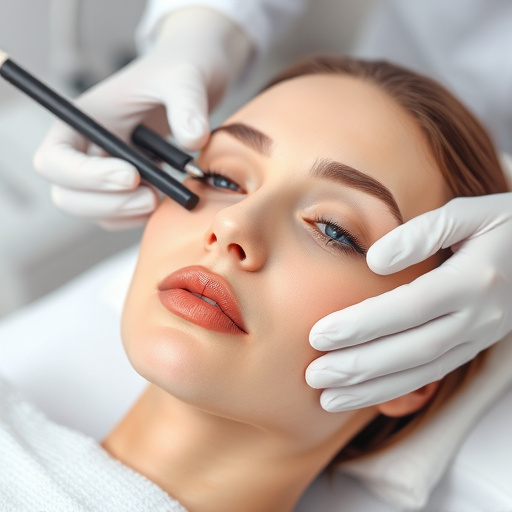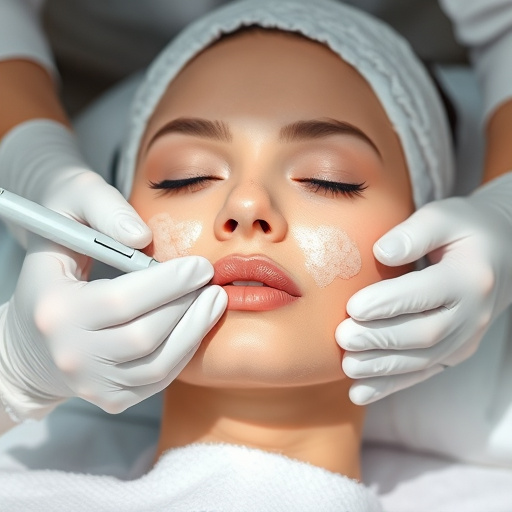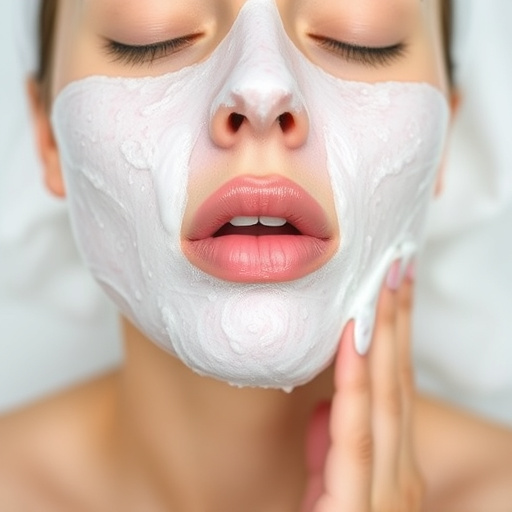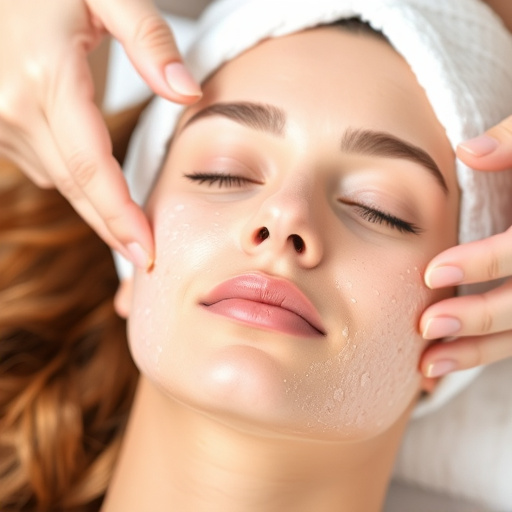Skin tags, caused by friction and irritation, commonly appear in delicate areas. Customized facials and skincare routines alleviate irritation, while medical spa services offer permanent removal through excisions or laser therapies. Non-invasive methods include over-the-counter creams with natural ingredients and professional procedures like cryotherapy and lancing. Proper aftercare, including cool compresses, moisturizing creams, exfoliants, and gentle cleansing, is crucial for minimizing discomfort and ensuring faster healing post-skin tag removal.
Skin tags, those small, soft bundles of skin, can often cause discomfort and irritation. This article guides you through effective strategies for safe and non-invasive skin tag removal, addressing the root causes of irritation. We explore various methods to eliminate skin tags without invasiveness, ensuring comfort during and after the process. Additionally, discover DIY care tips to alleviate post-removal discomfort, offering a comprehensive approach to managing and reducing skin tag-related irritations.
- Understanding Skin Tags: Causes and Irritation
- Non-Invasive Removal Methods for Comfort
- DIY Care Tips to Reduce Discomfort Post-Removal
Understanding Skin Tags: Causes and Irritation

Skin tags are small, soft skin growths that typically appear as harmless bumps on various parts of the body, most commonly the neck, armpits, and groin area. While they are generally benign, many individuals find them unsightly and uncomfortable. The primary cause of skin tags is friction or constant irritation of the skin against itself or clothing. This friction causes the cells in the top layer of the skin to cluster together, forming a small tag.
Irritation plays a significant role in the development and persistence of skin tags. Repeated rubbing or chafing can lead to inflammation and, over time, contribute to the growth and enlargement of these tags. People with certain skin conditions, such as eczema or diabetes, are more prone to developing skin tags due to increased sensitivity and potential blood flow issues. Customized facials and personalized skincare routines can help alleviate irritation by gently exfoliating the skin and reducing friction. Medical spa services offering specialized treatments like targeted excisions or advanced laser therapies provide effective solutions for those seeking permanent skin tag removal, addressing both the cosmetic concern and the associated discomfort.
Non-Invasive Removal Methods for Comfort

When it comes to non-invasive skin tag removal methods, there are several options that offer comfort and minimal disruption to your daily routine. One popular choice is using over-the-counter creams or solutions specifically designed for skin tag elimination. These topical treatments often contain natural ingredients like salicylic acid or tea tree oil, which gently exfoliate and dry out the skin tags over time. They are easy to apply at home, providing a convenient and pain-free approach.
Additionally, certain procedures like cryotherapy (frosting) and lancing are considered safe and effective when performed by trained professionals. Cryotherapy uses liquid nitrogen to freeze and destroy skin tags, while lancing involves puncturing the tag with a sterile needle. Both methods are quick and generally well-tolerated, reducing discomfort compared to more invasive procedures like surgical excision or body contouring techniques. Moreover, these non-invasive treatments can be combined with other acne treatments or chemical peels for comprehensive skincare solutions.
DIY Care Tips to Reduce Discomfort Post-Removal

After undergoing any skin tag removal procedure, it’s essential to take care of your skin to reduce discomfort and irritation. One effective DIY approach is to apply a cool compress to the treated area for several minutes daily. This helps soothe inflamed skin and minimize pain. Additionally, using gentle, moisturizing creams or lotions can prevent dryness and further irritation. Look for products containing ingredients like hyaluronic acid or glycerin that hydrate and nourish the skin.
To enhance skin tightening and reduce the appearance of any residual redness, consider incorporating a mild exfoliant into your routine. Exfoliation helps remove dead skin cells, promoting healthier-looking skin. Additionally, be mindful to avoid harsh scrubs or chemicals that could cause further irritation. Regularly cleansing the treated area with a gentle cleanser ensures that the wound stays clean and promotes faster healing. Remember, patience is key; it’s crucial to allow your skin time to recover while implementing these DIY care tips as part of your post-removal regimen.
Skin tags can be a nuisance, causing irritation and discomfort. However, with understanding causes and exploring non-invasive removal methods, you can effectively manage these small growths. DIY care tips post-removal further alleviate discomfort, ensuring a more comfortable experience. By adopting these strategies, you take control of your skin health, achieving a smoother and less irritable complexion. Remember, for persistent or uncomfortable skin tags, consulting a dermatologist is always recommended for professional guidance. Turn to reliable sources and experts for the best practices in skin tag removal.














